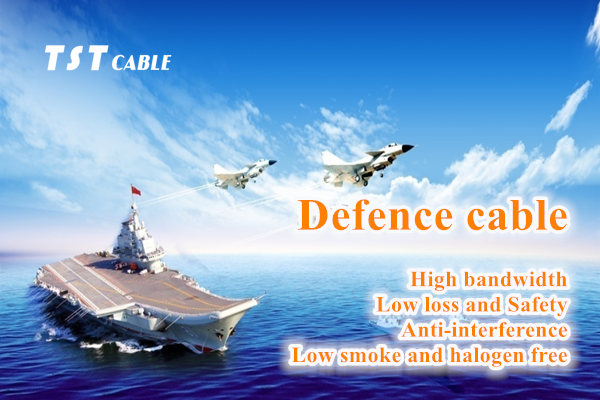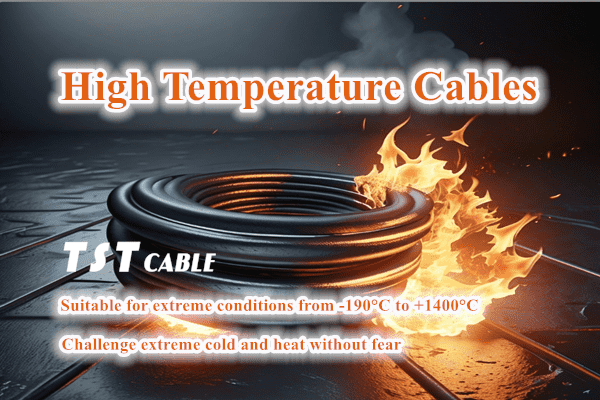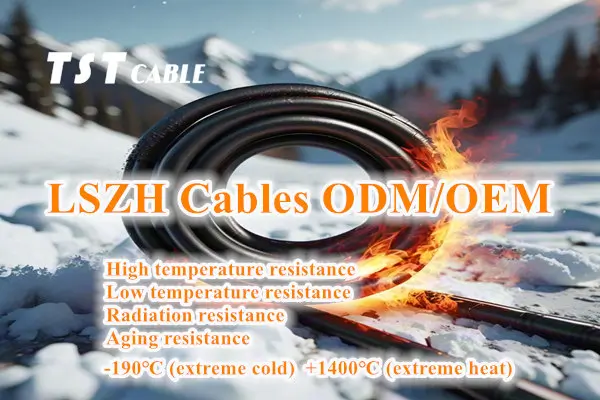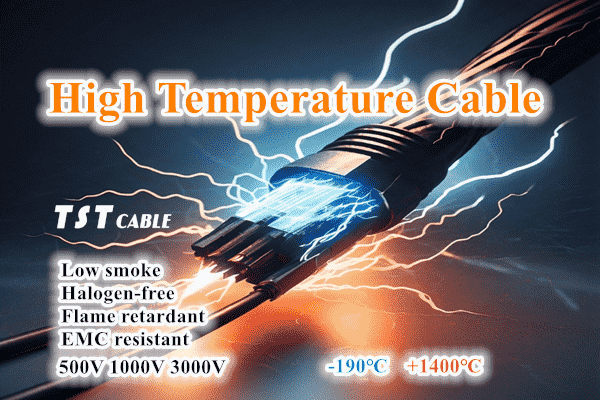Introduction to Defense Cable
Defense cable is the defense communication network, which is laid to meet the information communication between the military and the country. Defense cable refers to the defense communication network, which is a communication system composed of various communication lines and communication contact points that serve national security. It is generally composed of terminal equipment, transmission equipment, switching equipment and its supporting equipment.

The terminal equipment of the defense communication network is the communication equipment and its supporting facilities installed at the communication contact point. The function of the communication equipment is to convert voice, text, etc. into photoelectric signals and send them to the transmission equipment, and at the same time restore the photoelectric signals received from the transmission equipment to language, text, etc.
The transmission equipment of the defense communication network is the facility that transmits photoelectric signals from one place to another, including radio, wired and optical fiber transmission equipment. The radio transmission equipment includes long wave, medium wave, short wave, ultra short wave, etc.
Features of defense cable
- The connection is very extensive. The connection between national defense and politics, economy, domestic social activities and diplomacy is completed by the communication industry. The various activities within national defense construction are also completed through the communication industry, and the various activities within national defense construction are also connected through communication.
- The communication industry does not produce physical products. Its products are manifested as the spatial transfer of information and mail, and its production process and consumption process are basically the same.
- National defense communications must ensure that information is transmitted to the destination quickly, timely, accurately and safely. In particular, communications in the military are the basic means to ensure combat command, enabling superior orders and instructions to be issued in a timely manner, and subordinates to report in a timely manner, ensuring close coordination between friendly forces.
National defense cables refer to cables specially designed and used for national defense communication networks, mainly used for military and national security-related communication tasks. These cables usually use advanced materials and technologies to ensure their stable performance, safety and reliability.
The following is an introduction to national defense cable materials and applications:
Material
Optical fiber (optical fiber)
The core part of the national defense cable is optical fiber, which is a thin and transparent fiber made of glass or plastic that is used to transmit optical signals. Optical fiber has the following characteristics:
High bandwidth: It can support the simultaneous transmission of large amounts of data.
Low loss: low signal attenuation, suitable for long-distance transmission.
Anti-interference: not affected by electromagnetic interference.
Security: since optical signals do not generate electromagnetic radiation, they are difficult to be eavesdropped or interfered with.
Defense cable insulation materials
In order to protect the optical fiber from the external environment, one or more layers of insulating materials are usually wrapped around the optical fiber. These materials include but are not limited to:
Polyvinyl chloride cable (PVC): PVC is a common insulating material with good electrical insulation properties.
Polyethylene cable (PE) : PE material has good mechanical strength and chemical corrosion resistance.
Fluoroplastic cable (FEP): FEP material has excellent heat resistance and chemical stability, suitable for harsh environments.
Flame retardant material: used to improve the safety of cables in fire.
Protective layer
In order to further protect the cable from physical damage, one or more layers of protective materials are usually added to the outermost layer. These materials can be:
Steel wire braid: used to increase the mechanical strength of the cable.
Aluminum foil or copper tape: used to shield electromagnetic interference.
Armor layer: such as steel tape or stainless steel tube, used to provide additional physical protection.
Defense cable applications
Peacetime uses
Military command and control: used for command and coordination between military units.
Intelligence and reconnaissance: support intelligence collection, analysis and distribution.
Government communications: information exchange between government departments.
Logistics support: ensure effective communication of material transportation and logistics scheduling.
Use of defense cables in wartime
Tactical communications: emergency communications between front-line troops and headquarters.
Command link: ensure that senior commanders can issue orders in a timely manner.
Secure communications: transmit highly confidential information, such as combat plans and intelligence.
Special requirements for defense cables
Hidden laying: Defense cables often need to be laid along specific routes to reduce the risk of being discovered.
Rapid deployment: the ability to quickly establish communication links in an emergency.
Destruction resistance: the design should take into account the ability to withstand attacks and natural disasters.
Legal protection
Defense cables are regarded as part of the country’s critical infrastructure and are subject to strict legal protection. Any illegal destruction or theft of defense cables is a criminal act.
Defense cable related technologies
Fiber optic communication: using optical fibers to transmit data, providing high-speed and secure data transmission channels.
Network security technology: including firewalls, intrusion detection systems, etc., used to defend against network attacks.
Defense cables are vital to national security, so there are strict requirements and technical standards in design, construction and maintenance. With the advancement of technology, future defense cable systems may integrate more advanced technologies and functions to adapt to changing security threats and communication needs.
The difference between defense cables and defense optical cables
- Different signal transmission methods: Defense cables transmit data through electrical signals, while defense optical cables transmit data through optical signals.
- Different transmission distances: Defense optical cables use optical transmission, which has a longer transmission distance and less signal loss. Generally, they can be transmitted for hundreds or even thousands of kilometers, while the transmission distance of defense cables is limited by factors such as signal attenuation, generally within tens of kilometers.
- Different anti-interference capabilities: The optical signal of defense optical cables is less interfered with, so the anti-interference ability is stronger, which is suitable for high-intensity electromagnetic interference environments, while the electrical signal of defense cables is susceptible to electromagnetic interference, so the anti-interference ability is relatively weak.
- Different security: Due to the characteristics of defense optical cables such as no current and no electromagnetic radiation, the transmission information security is higher and it is difficult to be eavesdropped and intercepted. Therefore, it is widely used in sensitive occasions such as defense and military.
Application significance of defense cables
In modern national defense construction, various construction projects and military activities are inseparable from the exchange and transmission of information. Only on the basis of a large amount of information can all major decisions be made. With the application of high-tech in the military field, military operations require extensive coordination, such as coordination between military services, coordination between the military and politics, diplomacy, economy, and cultural propaganda, and coordination between the military and policies, etc., which must be achieved through communication. The construction of the national defense communication network is an important part of national defense construction and a basic condition for ensuring the smooth completion of training operations and combat missions.
The design and manufacture of defense cables require comprehensive consideration of multiple factors, including technological advancement, safety, reliability, and cost-effectiveness. With the development of technology, future defense cables may adopt more innovative materials and technologies to improve performance and adapt to new threat environments.
TST CABLES supplies a variety of special cables for key equipment throughout the defense industry, ranging from power supply for fixed and temporary ground operations and facilities, to control systems on ships and aircraft.
In areas where operational reliability is of national importance, TST CABLES is a regular on the approved supplier lists of most leading international defence organisations and their contractors.
TST CABLES’ customer-centric approach is underpinned by comprehensive technical support and fast response times. TST CABLES’ defence cable solutions cover a full range of services from cable selection and development to international logistics. All TST CABLES defence cables are precisely designed and tested to withstand the harsh environments they are exposed to.
Military cables, defence cables that meet national defence standards
In the UK, we have a reputation for providing high-performance cables that meet or even exceed the stringent requirements of the Ministry of Defence (MoD) on defence standard 61-12 parts 4, 5 and 6.
Our wide range of defence standard cables includes power cables, control and instrumentation cables and telecommunications cables. These cables are suitable for all branches of the defence industry.
Our international defence standard cable portfolio meets the most stringent requirements of a range of national defence standards, including UK Def Stan, French NF, German VG and US MILSPEC.
Our cables can withstand low temperatures at high altitudes and near the poles, as well as high temperatures in changing environments such as deserts and combat. They can also resist offshore conditions and the corrosive environment of the ocean. Our multi-core flexible data cables are ideal for high-density wiring widely used in aircraft, ships, process control systems, computers, data processors, military vehicles and equipment. Due to their high specifications, our defense standard cables are also widely used in civilian fields outside the defense industry.
Hope the above information is helpful to you! If you have any questions about military cables, defense cables, or need custom cables, you can always send an email to the professional cable engineers of the cable manufacturer TST Cable (email: lixiangchao@testeck.com, please state your country, your industry application, and your specifications and quantity requirements in the email, we can customize a dedicated solution for you and provide free samples).
Also available in:
English





